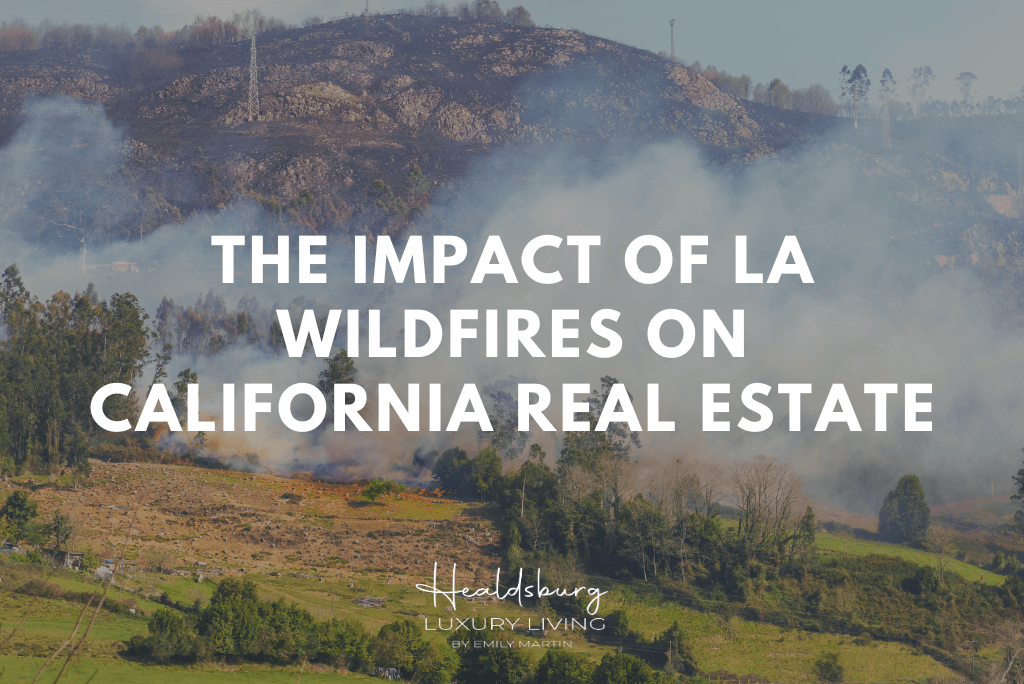The devastating wildfires in Los Angeles in early 2025 have left an indelible mark on California’s real estate market. With over 12,000 structures destroyed across more than 40,000 acres, the disaster has displaced thousands of residents, strained the housing market, and created ripples that will likely influence the state’s housing policies for years to come. The impact of LA wildfires on California real estate has been profound, affecting everything from rental prices to housing availability and insurance costs. This article explores these dynamics and their implications for the future.
Looking for ways to support those impacted by the LA wildfires, donate to Emily’s Fundraising page with World Central Kitchen. As a food writer, I believe that nourishment is a fundamental right, not a luxury. In times of crisis, a warm meal can provide more than just sustenance, of offers comfort, home, and a sense of normalcy. Please help support WCK feed those impacted.
Donate to Emily’s Fundraising page with World Central Kitchen.
A Surge in Rental Prices
One of the most immediate effects of the LA wildfire impact on California real estate has been a surge in rental prices. As displaced residents scramble to find temporary accommodations, demand for rental properties has skyrocketed, particularly in areas unaffected by the fires. Properties that previously lingered on the market for months are now seeing unprecedented interest.
Key observations:
- Dramatic Price Increases: According to a Fox Business report, rental properties have seen offers well above asking prices. For instance, a home listed at $13,000 per month received a $20,000 offer, only for the landlord to counter with $23,000.
- Legal and Ethical Concerns: California law prohibits landlords from raising rental prices by more than 10% following a declared emergency, but enforcing these regulations has proven challenging.
- Read more about how CA Attorney General is prosecuting realtors who are illegally taking prices up by more than the legal amount of 10% during natural disasters.
Housing Shortage and Increased Demand
The fires have further exacerbated an already critical housing shortage in Los Angeles. As of January 2025, the state’s housing deficit—a longstanding issue—has worsened due to the destruction of thousands of homes. Families displaced by the fires are now competing for limited rental options, intensifying the scarcity of affordable housing.
Certain neighborhoods spared by the wildfires are experiencing increased property values as displaced residents seek to relocate. While this surge benefits homeowners in unaffected areas, it adds another layer of complexity for potential buyers and renters. Short-term lease availability has become particularly constrained, leaving many without feasible options for immediate housing.
Challenges for Homeowners and the Insurance Market
The wildfires’ impact extends beyond renters to homeowners, particularly in the realm of insurance. Insured losses from the 2025 fires are estimated to reach tens of billions of dollars, further destabilizing California’s already strained insurance market.
Notable challenges include:
- Rising Insurance Costs: Many homeowners face skyrocketing premiums or outright denial of coverage as insurers retreat from the California market.
- Barriers to Rebuilding: Without adequate insurance, rebuilding becomes a daunting task for fire victims, exacerbating the housing crisis.
- Long-Term Implications: The insurance crisis could drive residents out of fire-prone areas, further reshaping the housing market.
Future Implications for Housing Policy
The LA wildfire’s aftermath is a pivotal moment for California’s housing policy. State leaders face pressure to address immediate rebuilding needs and implement long-term preventive measures. Priorities include constructing fire-resistant housing in safer areas to mitigate future risks and address housing shortages while balancing safety with affordability. Recent executive orders streamline rebuilding, but critics argue for broader reforms, including investments in sustainable housing and stricter price-gouging laws, to create a more resilient housing market.
The Road Ahead for California Real Estate
The 2025 Los Angeles wildfires have reshaped the real estate landscape in profound ways. Soaring rental prices, a deepening housing shortage, and an insurance crisis are just a few of the immediate challenges facing the state. Long-term solutions will require a coordinated effort among state leaders, developers, and insurers to rebuild and adapt to the evolving realities of climate change.
As California continues to grapple with these challenges, one thing is clear: the resilience of its real estate market will depend on innovative, sustainable, and inclusive policies. Addressing the dual crises of affordability and safety will be crucial in ensuring that all residents have access to secure housing in the years to come.
